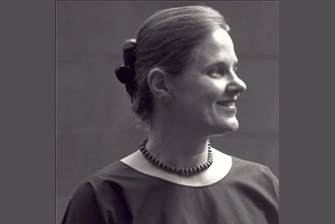
Dive into Teaching Improvisation
- Jan 23, 2024

Inspiration and How To Tips
After hearing my presentation about teaching improvisation, a colleague suggested I consider “less cheerleading and more content.” Her wise comment helped me realize as an advocate for musical creativity, that half of my job is to encourage (okay, prod) the uninitiated to “dive in” by closing the music books now and then. The other half is to offer practical teaching tips to those who have already taken the “off page” plunge.
Steps To Introducing A New Creative Concept
First of all, think of creative concepts as tools, not pieces. Just as a carpenter can use a hammer to build a mansion or a doghouse, a creative concept, once internalized, travels with the student from piece to piece. For example, one might use the creative concept of neighbor notes to embellish a jazz lead sheet or to ornament in a Baroque piece.
To get a student to try out a new creative concept, start by demonstrating a level-appropriate left-hand accompaniment on a chord progression or ostinato bassline. If you need ideas, you can always use the bass clef part of a tune they have already learned. Then, follow these steps, which you can remember by thinking of the acronym for the vocal jazz style known as scat:
Specify
Compliment
Ask questions
Turn them loose
1. Specify
Ask your student to improvise a right-hand melody within specifically limited parameters. For example, you could limit it to creatively using just one note, mixing up the melody, or playing around with the pentatonic scale. Hold them to it. Initially, they mustn’t stray from the limitations.

2. Compliment
No matter what they play, praise their attempts. You can always find something to reinforce. For example, if they play timidly and quietly, compliment their use of dynamic shading. If they play loudly and enthusiastically without rhythm, tell them how you admire their willingness to dive in. Even if they refuse to play at all, you can smile and say how creatively they use rests!
The main thing is to make them feel safe so they know that whatever they play, it will be okay with you. You are puffing on a tiny creative spark in a pile of kindling. In order for it to take flame, they have to feel good about their attempts. Your approval encourages further exploration.
3. Ask questions
Here is where you tease out the creativity while simultaneously teaching the elements of music. You might say, “I noticed you played those chords way down low on the piano, how would they sound in the octave below middle C?” thus demonstrating where Chopin, jazz artists, Joplin and the rest place harmony on the piano. For a forte fanatic, you could help them understand dynamics by asking, “How would your improv sound if it started very quietly and then grew louder? What kind of a story would that suggest to a listener?” For a non-rhythmic player, “I like how you have so many ideas with all those notes. How can we get all those notes to fit into a steady beat?”

4. Turn them loose
Having experimented with limited parameters, students are often itchy to expand their options. Send them off on a voyage of musical discovery with travel tips such as, “I loved how you fascinated me with dynamic, rhythm, and articulation on that one-note improv. See if you can keep that going while also adding more notes.”
Rinse and Repeat
Then complement the results, ask more questions, and turn them loose again on a new exploration. Repeat week after week always reinforcing musicality. When it’s time for your student to say goodbye, you’ll feel the satisfaction of knowing you’ve set them up for a lifetime of enjoyable piano playing.
Until next time, enjoy your creative music-making journey,
Published on bradleysowash.com, May 18, 2017, Copyright © 2017 Bradley Sowash

An accomplished composer, educator, critically-acclaimed recording artist of seven CDs, and concert jazz pianist, Bradley Sowash has delighted listeners of all ages in concert halls and churches throughout the United States and Europe for over two decades. His emotional style and formidable technique have prompted favorable reviews in national publications including The Village Voice’s comment that "Sowash's music powerfully conjures the moods." Known for his instant audience rapport, Billboard Magazine declared "He can really move an audience along with zest and wit." His music has received national airplay including on NPR "Morning Edition." Mr. Sowash continues to be a regular guest on the PBS series, "The Piano Guy".





